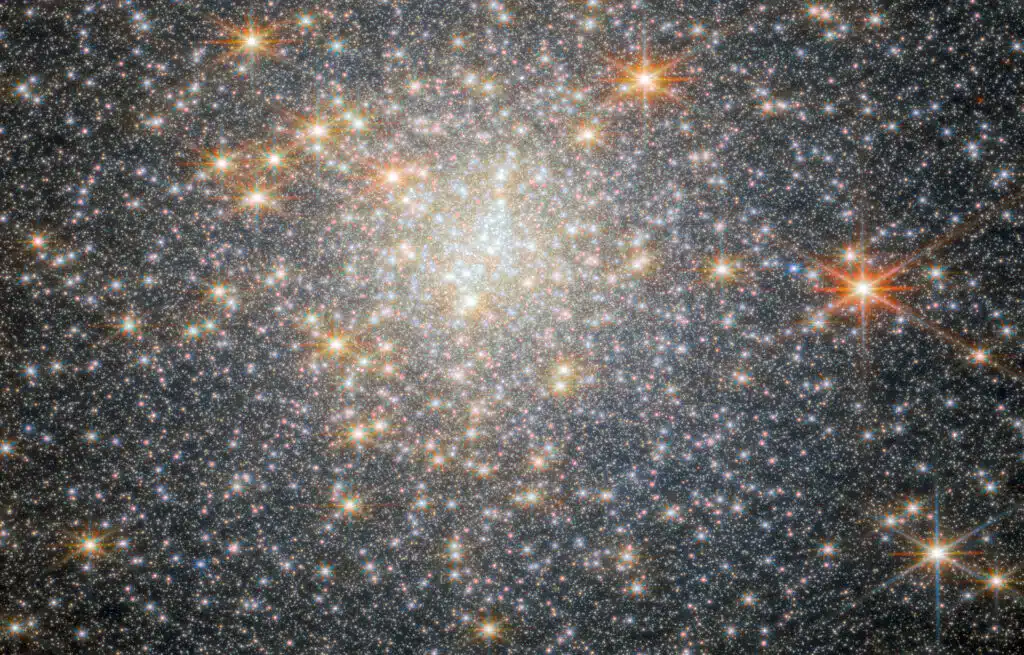James Webb telescope captures star clusters in extremely early universe
- The James Webb Space Telescope has given a first-ever glimpse into star clusters in ancient galaxies
- It’s the first discovery of star clusters in an infant galaxy less than 500 million years after the Big Bang
- Scientists have said it wouldn’t have been possible without the James Webb Space Telescope
Published on Aug 07, 2024 at 7:35 AM (UTC+4)
by Claire Reid
Last updated on Aug 07, 2024 at 11:19 AM (UTC+4)
Edited by
Tom Wood
Astronomers have said the James Webb Space Telescope has provided them with a first-ever look at star clusters when the Universe was just 460 million years old.
The James Webb Telescope is the largest telescope in space and is fitted with high-resolution and high-sensitivity instruments that can view objects that are older or more distant than ever before.
Its latest discovery is the first discovery of star clusters in an infant galaxy less than 500 million years after the Big Bang.
DISCOVER SBX CARS: The global premium car auction platform powered by Supercar Blondie
The James Webb Space Telescope has made some big discoveries

The James Webb Space Telescope – or JWST- has already made some pretty interesting discoveries – such as revealing that dwarf planets, Makemake and Eris, thought to be ‘dead’ are still showing signs of life.
It was also able to observe light on an ‘Earth-like’ planet for the first time – and has given us important information on how the universe is expanding.
The most recent discovery has allowed researchers to see star clusters inside an extremely ancient galaxy for the first time.
The light seen by the JWST has been traveling to Earth for around 97 percent of the universe’s lifetime.
And the images couldn’t have been revealed without the power of the JWST.
“The surprise and astonishment were incredible when we opened the JWST images for the first time,” said Angela Adamo of Stockholm University and the Oskar Klein Centre in Sweden in a statement.
‘No other telescope could have made this discovery’

“We saw a little chain of bright dots mirrored from one side to the other — these cosmic gems are star clusters! Without the JWST, we would not have known we were looking at star clusters in such a young galaxy!”
JWST means researchers are able to see where stars formed and how they are distributed, in a similar way to how the Hubble Space Telescope is used to study local galaxies.
“Webb’s incredible sensitivity and angular resolution at near-infrared wavelengths, combined with gravitational lensing provided by the massive foreground galaxy cluster, enabled this discovery,” Larry Bradley, an astrophysicist at the Space Telescope Science Institute added.
“No other telescope could have made this discovery.”
In the future, the team is hopeful they will be able to observe many more galaxies in similar detail.
Exciting stuff.

Claire Reid is a journalist who hails from the UK but is now living in New Zealand. She began her career after graduating with a degree in Journalism from Liverpool John Moore’s University and has more than a decade of experience, writing for both local newspapers and national news sites. Claire covers a wide variety of topics, with a special focus on cars, technology, planes, cryptocurrency, and luxury.




